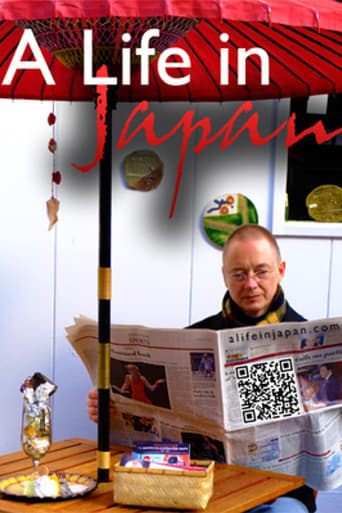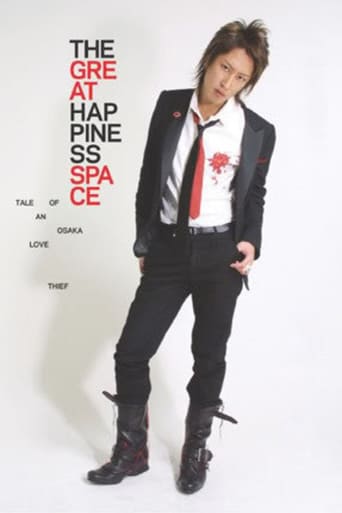


The Great Happiness Space: Tale of an Osaka Love Thief
January. 22,2006Welcome to The Great Happiness Space: Rakkyo Café. The club's owner, Issei (22), has a staff of twenty boys all under his training to become the top escorts of Osaka's underground love scene. During their training, they learn how to dress, how to talk, how to walk, and most importantly, how to fake relationships with the girls who become their source of income. Join us as Osaka's number one host boy takes us on a journey through the complex and heartrenching world of love for sale in the Japanese underground.


Similar titles

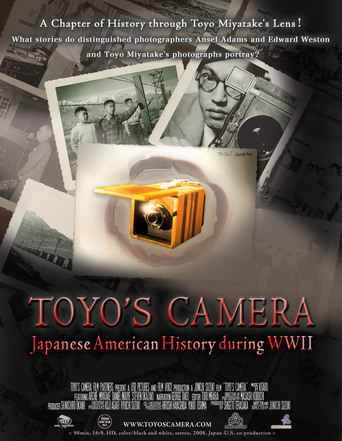
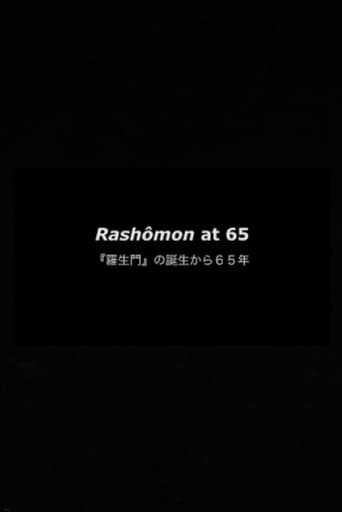
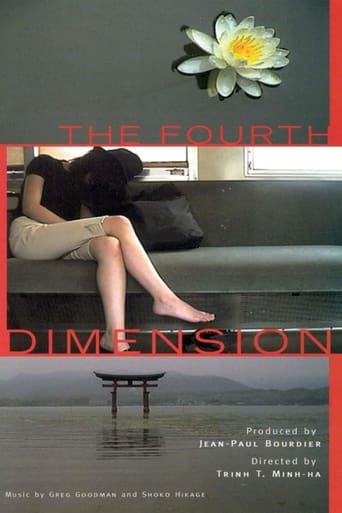





Reviews
This is a disturbing and important film that peels away many layers of meaning about the mutual manipulation that takes place between men and women. It examines love and need, but what it examines most of all is loneliness. It is a devastating critique of the phony love that is dispensed for money, and what it does both to those dispensing the money and those who profit from it.The scene of almost all the action in this film is the Rakkyo Cafe, the most popular 'host bar' in Osaka, where women seek the favours of 'host boys' such as the exploitative yet empathetically decent Issei, owner of the bar. The women spend outrageous amounts of money to be pampered and pandered to (and systematically lied to) by these highly skilled and well-groomed young men who are similar to male versions of the famous geishas. The difficulty in maintaining this kind of artifice is evidenced by the high turnover: in many of these bars in Osaka (there are about 100), 'host boys' make a lot of money, but they can't tolerate the stress and demands for very long; few last longer than a year. Despite being swarmed over by women who profess their adoration for them, the men do not get intimately involved with them. If they get too close, if they have sex with them, the men will lose their illusion of perfection, and will no longer be 'marketable'. These young women pursue a 'happiness place' a la Peter Pan's Neverland. They search for a kind of love that exists only in illusion and fantasy. Essai is an articulate and thoughtful man who understands all too well the control he has over the women. He also understands the emotional price he is paying for engaging in this activity. He 'loves' them, offers them solace, but he has become profoundly disaffected. 'I can't trust any woman any more,' he says. This superb film (director Jake Clennell offers no narration and lets his camera do all the work) shows that Issei and all of these well-paid gigolos (without the sex), as joyous as they appear on the screen, desperately want to be loved. They end their long nights at dawn, and go home alone. These shining boys and their adoring 'girlfriends' are, in the end, desperately lonely people.This film, in a larger sense, is a metaphor for modern society as a whole. In the midst of plenty, loneliness and alienation abound.
A wonderful look at the world of hosting in Osaka, where young pretty boys preen and hone the art of fulfilling - incompletely - the fantasies of their female clients at a tragic cost. In a refreshing change from the trend of centering every documentary on the documentary's maker, Jake Clennell stays off camera and is rarely heard. The staff and clientèle of host club Rakkyo Café are free to reveal their stories and insights without interference or dramatizations. Neither are needed as the stories are riveting. Unappreciated sacrifices and unfulfilled desires clash with deceit and opportunism in an atmosphere ruled by cold business ethics and marketed emotions. Clennell structures the narratives beautifully, winding through the artifice to the underlying truth as a night at the club unfolds. By the closing scenes of spent hosts staggering home in the early Osakan morning it's hard not to empathize with their emptiness or envy their bank accounts. One of the best documentaries I've seen, the main complaint is clocking in at just over seventy minutes it's too short. Worth hunting down.
Sometimes one can feel that one already knows everything there is to know about the world; but sometimes a film, such as this craftily revealing documentary, provides insights into another culture that seem wholly alien and strange. The subject of 'The Great Happiness Space' is Japan's host bar scene, where women pay for the company of men. At first, this intrigues because of the reversal of the sexes compared to the normal client-prostitute relationship. Soon, one makes new observations: that the hosts are very much "pretty boys", not the heaving hulks of unadulterated masculinity that are often held up as the female ideal, at least in the west; and secondly, that the women themselves are young and attractive, a long way from the stereotype of the average man who pays for women's services. Nor do they resemble the stereotype of Japanese women, quiet and demure; in the bars, they are drunken ladettes, and indeed, their relationships with their hosts seem more like those of groupies to rock stars than of punters to whores. In fact, in accordance with common opinions about female desire, but in contrast to normal practice in the sex industry, physical contact, while it often happens, is not what the women pay for; indeed, the men try to avoid it, as what keeps their clients coming back is the eternally unfulfilled promise of love. In one sense, the hosts are performing a con-trick, by selling this promise; but one also thinks, surely the women are willingly deluded. But when one learns the fantastic sums that the clients pay for this privilege, this phenomenon suddenly no longer seems so benign. But how can they afford to pay so much? The answer is, circularly, that most of the clients (at least, the high-spending ones), are also sex workers. In some ways, this makes sense: it explains their affluence, their craving for cathartic recreation, their floating of social norms, and also, perhaps, their willingness to pay for love not sex; yet in another sense, it seems wholly bizarre that those who practice the arts of illusion on their own clients should nonetheless fall so completely for the deceptions of their hosts. They also seem a little too like "nice girls" to be prostitutes, until it is implied that many actually take up prostitution to feed their habit; a healthier habit, perhaps, then heroin and the other drugs that prostitutes are stereotypically addicted to; but, it seems, one just as compelling.There's something deeply sad about all this, and yet it never feels sordid: the mutually sustained illusion hides the shockingly expensive transaction that lies behind the party, and the dream. And the girls, though surely headed for a fall, seem strangely calm and contented with their delusions, while their playboy hosts are, in the final scene, shown exhausted and hung-over, physically and perhaps morally exhausted by their work. And relating this scene to anything western seems very hard, even though it has arisen in response to universal urges. Truly, we live in a strange, varied, and tragic world.
The world of hosting is little known outside of Japan, that of glamorous host boys even less. Jake Clennell's mind-boggling documentary is so hypnotic that single young men may want to take notes, and those who are partnered do the same to learn better how to please the female psyche.The 'hosts' in any of ten exclusive clubs in Osaka only make money if they can be charming and engaging while selling champagne at $500 a bottle. Although there are maybe 100 host clubs, most of them provide female companions for light conversation, company, and laughter (not necessarily sex - which is generally provided from a number of different establishments). Issei, however, presides over a Cafe Rakkyo club, where glamorous host boys, not women, do the entertaining. They make beautiful young women laugh, smile and feel good about themselves - women who pay very handsomely for the pleasure. They party till they drop, women competing with each other for the host boys' attention by spending more money."For girls, we are products," says Issei. "We have fake love relationships," and he compares his job to that of Peter Pan, who took people to a world that doesn't exist. "We sell dreams - that's our job." We witness candid interviews with the host boys, including a new lad being interviewed for a job, and also a number of the good-looking young women who frequent the host bars. They confess to how they fall in love with Issei. He, in return, says how although he may have sex with the girls, he often tries not to if that's their aim, because afterwards they are more likely to 'dump him.' Some of these customers have been coming to the club for several years. They pay by the hour for the attention of one of the host boys at the 24hr party room, but he will often be in demand by several women at once. If a woman wants to speak to a host privately, there is a special chair at extra cost ($50). Issei earns about $50,000 a month. He says the thing that stops him earning more is that he cares about his clients and won't let them spend too much money just for the sake of it. He talks about 'healing' his customers Why do the girls come? "When I'm at a host club, I'm treated like a princess," says one. When they have been coming for a year or more, they often look to their chosen host for good advice. A girl never changes host within a club, so a long term 'relationship' of sorts develops. In this high-octane party atmosphere girls spend $1,000 or more in a single day. Issei says the highest was £40,000. "It's about how much girls want to financially worship me," he says. "He listens to me, he entertains me. That makes me really happy," she explains. We see some of the host boys out in the street persuading girls to come for a drink to the club. They have the charisma of TV personalities. The rapid fire conversation and banter is expertly aimed to make the girls smile and feel magnetically drawn to them. In a way it is quite selfless (if highly paid!) and Issei explains that if a host really develops personal needs towards a customer then he can't be effective as a host.One customer explains how she would be prepared to die for Issei. "To a certain extent, money can buy love," he tells the interviewer with a calm conviction that is slightly unnerving. Only later in the film do we find out more about the girls and how many of them play an equally dangerous game.The subject matter, the honesty and insight of the interviews, and the dervishlike way the winning lines are so hard to explain away, together with a very sure documentary hand that inserts no moral judgements, make The Great Happiness Space: Tale of an Osaka Love Thief an unforgettable piece of film-making.
